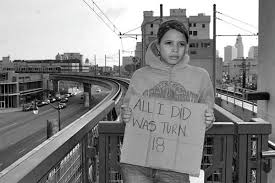From 2006, when WA introduced Extended Foster Care for aged-out youths engaged in post-secondary education, to 2019, when it became available for all aged-out youth aged 18-21, the percentage of youth who entered extended foster care rose from 5% to 80%, mostly in supervised independent living programs.
As directed by the legislature, a study was run on the outcomes and effects of Extended Foster Care, and here we get a high-level overview.
15% of youth in Extended Foster Care experienced homelessness between 18 and 21. Without Extended Foster Care, three times as many (45%) experienced homelessness. Even after leaving extended care, the risk of homelessness was ~22% instead of ~38%. Youth who had Extended Foster Care were less likely to need public assistance, less likely to have criminal convictions, more likely to continue their education, less likely to have children before 23, and less likely to have their children put into foster care if they did.
Quantifying the amount that the state saved across all these systems (making a number of assumptions to do so) makes it almost certain that the state actually saves thousands of dollars per youth by providing Extended Foster Care. A real good news story!
Read the full report: https://www.wsipp.wa.gov/ReportFile/1721/Wsipp_Extended-Foster-Care-in-Washington-State-Final-Report_Report.pdf

